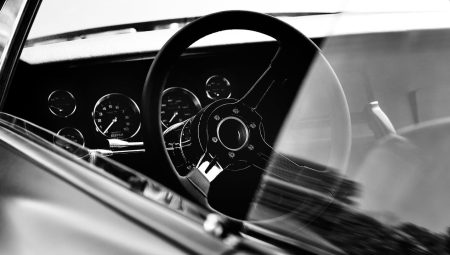Engine mount compatibility is essential for the smooth operation of your vehicle. Choosing the right engine mount can significantly impact your car’s performance and safety. It’s like finding the perfect pair of shoes—if they don’t fit right, you’re in for a rough ride! But how do you ensure you make the best choice? Start by understanding the different types of engine mounts available, such as solid, hydraulic, and polyurethane. Each type serves a unique purpose and is suitable for specific driving conditions.
Additionally, consider the materials used in engine mounts. Rubber, metal, and composite materials each have their own strengths and weaknesses. For instance, while rubber mounts provide excellent vibration dampening, they may wear out faster under extreme conditions. On the other hand, metal mounts offer durability but can transmit more noise and vibration.
Installation also plays a critical role in compatibility. Proper installation techniques can prevent a host of issues down the line. It’s crucial to have the right tools and knowledge to avoid common pitfalls during replacement. Ultimately, keeping an eye on signs of wear and tear, such as unusual vibrations or noises, can save you from costly repairs.
In summary, understanding the intricacies of engine mount compatibility is vital for maintaining your vehicle’s performance. By considering the type, material, and installation factors, you can make informed decisions that enhance your driving experience. Remember, a well-mounted engine isn’t just about performance; it’s about your safety on the road!
Understanding Engine Mount Types
When it comes to engine mounts, understanding the different types is crucial for ensuring your vehicle runs smoothly. Engine mounts are the unsung heroes of your car, absorbing vibrations and securing the engine in place. There are three primary types: solid, hydraulic, and polyurethane mounts. Each type has its own unique characteristics and applications.
Solid mounts are designed for high-performance vehicles. They provide maximum stability but can transmit more vibrations to the chassis, which might not be ideal for daily drivers. On the other hand, hydraulic mounts use fluid to dampen vibrations, making them perfect for everyday vehicles as they offer a smoother ride. Lastly, polyurethane mounts strike a balance between performance and comfort, providing better durability than rubber while minimizing vibrations.
Choosing the right engine mount type depends on your driving style and vehicle needs. If you’re looking for performance, solid mounts might be your go-to. However, if comfort is your priority, hydraulic mounts could be the better choice. Remember, making an informed decision can lead to a more enjoyable driving experience!
Material Considerations
When it comes to engine mounts, the material you choose can make or break your vehicle’s performance. Think of it like the foundation of a house; if it’s not solid, everything built on top can suffer. The most common materials for engine mounts include rubber, metal, and composite, each offering unique benefits and drawbacks.
Rubber mounts are popular due to their ability to absorb vibrations, providing a smoother ride. However, they can degrade over time due to heat and exposure to oil. On the other hand, metal mounts are incredibly durable and can handle extreme conditions, but they tend to transmit more vibrations, which can lead to a rougher ride. Lastly, composite materials are a newer option, combining the best of both worlds with enhanced strength and reduced weight.
To help you understand these materials better, here’s a quick comparison:
| Material | Advantages | Disadvantages |
|---|---|---|
| Rubber | Excellent vibration dampening | Can degrade over time |
| Metal | Highly durable | Transmits more vibrations |
| Composite | Lightweight and strong | Cost may be higher |
Ultimately, your choice of material should align with your driving style and the conditions you frequently encounter. So, before making a decision, consider what matters most to you: comfort, durability, or weight efficiency?
Installation Factors
When it comes to engine mount installation, precision is key. A poorly installed mount can lead to a cascade of issues, from increased vibrations to complete engine failure. First, ensure you have the right tools at hand; a torque wrench, socket set, and jack stands are essential. It’s also crucial to follow the manufacturer’s guidelines for torque specifications to avoid over-tightening, which can damage the mounts.
Before diving into the installation, take a moment to inspect the surrounding components. Look for any signs of wear or damage that might affect the new mounts. For example, if the engine or transmission is misaligned, it can cause premature wear on the new mounts. Remember, installation is not just about replacing parts; it’s about ensuring everything is in harmony.
Here are some common pitfalls to watch out for during installation:
- Ignoring manufacturer specifications: Always refer to the service manual.
- Forgetting to check alignment: Misalignment can lead to serious issues.
- Neglecting to use new hardware: Old bolts may not hold up under stress.
In conclusion, taking the time to focus on these installation factors can save you from future headaches. A well-installed engine mount not only enhances performance but also contributes to your vehicle’s overall safety.
Signs of Wear and Tear
Recognizing the signs of worn engine mounts can save you from costly repairs and enhance your vehicle’s performance. Imagine driving your car, and suddenly you notice an unusual vibration. This could be the first clue that something’s off. Engine mounts are designed to absorb vibrations, so if you feel excessive shaking, it might be time to investigate.
Another telltale sign is unusual noise. If you hear clunks or rattles, especially when accelerating or shifting gears, your engine mounts might be struggling to keep everything in place. Additionally, watch for misalignment issues. If your steering feels off or your vehicle pulls to one side, it could indicate that the mounts are failing, causing the engine to shift unexpectedly.
Here are some key symptoms to keep an eye on:
- Vibration: Excessive shaking while driving.
- Noise: Clunking or rattling sounds during acceleration.
- Misalignment: Steering issues or pulling to one side.
By staying vigilant and addressing these signs early, you can ensure your vehicle remains in optimal condition, keeping both safety and performance at the forefront.
Maintenance Tips for Longevity
To keep your engine mounts in prime condition, regular maintenance is essential. Think of your engine mounts as the unsung heroes of your vehicle; they absorb vibrations and keep everything running smoothly. Just like any other component, they require attention to function optimally. Start by inspecting the mounts periodically for any signs of wear, such as cracks or excessive movement. Cleaning them can also make a significant difference. Dust and grime can build up, leading to deterioration. Use a mild detergent and a soft brush to gently clean the mounts without causing damage.
Another crucial aspect is to watch for symptoms of failure. If you notice increased vibrations or unusual noises while driving, it might be time to take a closer look. Ignoring these signs can lead to more severe issues down the road. Additionally, consider the driving conditions. If you often drive on rough terrain, your mounts may wear out faster. Keeping a close eye on your vehicle’s performance can help you catch problems early and avoid costly repairs.
Lastly, always refer to your vehicle’s manual for specific maintenance recommendations. Each model may have different requirements, and following those guidelines will ensure your engine mounts last as long as possible. Remember, prevention is always better than cure!
Frequently Asked Questions
- What are engine mounts and why are they important?
Engine mounts are crucial components that secure the engine to the vehicle’s frame. They absorb vibrations, ensuring a smoother ride and protecting other parts from damage.
- How do I know if my engine mounts need replacement?
Signs of worn engine mounts include excessive vibration, unusual noises, or misalignment of the engine. If you notice these symptoms, it’s time to inspect or replace them!
- Can I install engine mounts myself?
Yes, if you have basic mechanical skills and the right tools! However, proper installation is key, so make sure to follow guidelines closely or consult a professional.
- What materials are best for engine mounts?
Common materials include rubber, metal, and composite. Rubber offers good vibration dampening, while metal provides durability. Choose based on your driving conditions!





